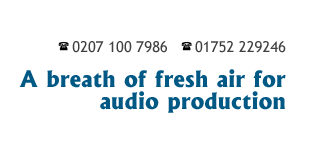“Communication lets me down…” so once warbled Sir Tony Hadley, lead warbler with the ‘80s beat combo Spandau Ballet. He was probably right. Although back then there were no mobile ‘phones, no email, no texts and no social media. If you wanted to communicate when that particular song was riding high in the “hit parade” you had to pick up the ‘phone or write a letter. Those methods of communication required a bit of thinking. Perhaps that’s where we’re letting ourselves down.
With all the above-mentioned methods of communication, it’s far too easy to tell someone something. A few taps on a screen or a keyboard and it’s done. Gone. Sent. There’s no going back. If you actually stopped and thought about it; are you saying the right thing in the right way…? Then would you still be in such haste to communicate?
The List
Those hip cats at startupdonut.co.uk recently put together a list of the best ways to communicate with teams. So let’s take a look at them (and add our own comments, naturally…)
1. Give employees the information they need. This includes technical information, training and health and safety requirements. Don’t just say, “This is what I want you to do, now get on with it”. Otherwise chaos reigns.
2. Use communication to help employees perform. Make sure everyone agrees on what you’re aiming for, welcome feedback and recognise people when they achieve their target. The last thing you want is everyone solemnly going through the motions and making a hash of it.
3. Communicate regularly to build your relationship with individuals and teams. Make people feel they’re involved, show an interest and get to know your team socially. Don’t wander around like the presenter on Question Time going, “You! Yes, you in the blue shirt!”
4. Aim for open, honest two-way communication. Don’t just sit in your office being unapproachable. Encourage suggestions and actually listen to them! Otherwise you’ll be one of those bosses where everything goes quiet whenever you walk into a room.
5. Plan communications. Actually think about the objective and break down the message to key points.
6. Anticipate your audience's attitude. What do they already know? Will they be interested? When are they most likely to be receptive?
7. Give advance warning when appropriate. Make sure everybody is prepared and available to receive the information. If it’s happening in a meeting, create an agenda. The last thing you want is a key person feeling unhappy they’re the last to know!
8. Choose the right medium. The best way to communicate is still the old fashioned way! Verbally. That can either be face-to-face, telephone (or conference call) or via webcam (Skype, FaceTime, etc.) Then, follow it with written confirmation such as email, memos, text and intranet.
9. Follow up written communications. Don't assume signs and memos will be read and understood, especially when they contain complex information. People walk past notices every day. Just because there’s a new one gone up, doesn’t mean they’ll automatically see it!
10. Handle sensitive communications face-to-face. We’ve all had emails or texts where we’ve got the mood all wrong. Sometimes a facial expression needs to be seen.
11. Use clear, appropriate language. Don’t just rattle through everything; be specific about action points, deadlines and responsibilities.
12. Build trust. People are bound to have concerns, so be positive, patient and polite. Explain yourself – particularly when overriding an employee's suggestion – and do what you say you will.
13. Control discussions. No-one likes things that drag on forever so stick to the agenda and keep things brief.
14. Confirm understanding and agreement. Review outcomes to see whether communications have been effective. Don’t lose track of everything that’s gone so well, particularly if you’re attentions are required elsewhere.
15. Practise communication skills. Standard fare really: asking open-ended questions, listening and ensuring you understand and using positive body language. Don’t look as though you've no idea what's going on.
Got all that? Lovely. So then we move onto what are called “cardinal rules”.
Dos & Don'ts
Do:
Deliver the information that employees need.
Provide information in an appropriate medium.
Build relationships through regular, open communication.
Encourage two-way communication.
Listen.
Make sure communications have been understood.
Live up to any commitments you make.
Don't:
Speak (or email) without thinking.
Assume people will pay attention, particularly to signs and memos.
Assume people understand what you are trying to say.
Try to communicate too much at once.
So True
If everything you’re saying is true (we’re back to Spandau Ballet again) and events unfold as you said they would, everyone will trust you and follow you through thick and thin. These all look like pretty basic points but sometimes we allow events and technology to run away with us and we forget the basics.
There is one other option to look at and this is where we come in! When your team is so huge it stretches across the entire country - or even the entire planet - you can take a tip from the likes of Serco, Barclays and E-ON. These are companies that utilise the skills of the Fresh Air Studios team to record unique podcasts that can be accessed by staff members over the telephone or company intranet. Here they can listen to interviews with managers and announcements from CEOs. Take a look around our website for more info.
As for the tips you've just read through; there’s no harm in brushing up on the basics now and then. This stuff is pure gold! (Oh dear… That was one we couldn’t resist…) If you should wish to have a nose at the original article, you’ll find it here: http://www.startupdonut.co.uk/startup/employees/people-management/how-to-communicate-with-employees
Tell us what you think...
Share on Twitter

"And this is how you draw a Spongebob Squarepants"
Business, Branding and Bond: What can we learn from 007? What the “Battle of the Bonds” can teach us about branding... Business, Branding and Bond: What Can We Learn From 007?
Business, Branding and Bond: What Can We Learn From 007?
Fresh Air Studios helping solicitors market their businesses and making the on-hold experience more pleasant for customers... Tele Marketing for Law Firms & Solicitors
Tele Marketing for Law Firms & Solicitors
Fresh Air Studios serves up marketing and promotion ideas for restaurants from online to on-hold... Marketing Ideas for Restaurants and Hospitality
Marketing Ideas for Restaurants and Hospitality
Why should you consider radio advertising for your business? Itís an exciting medium and with a good commercial and strategic scheduling can give great returns on investment... The Benefits of Radio Advertising
The Benefits of Radio Advertising
Producing commercials for radio is different from creating any other form of advertising. It is important to strike a balance between creativity and functionality. Here we discuss how to write a good radio ad script and more... Commercials for Radio - Theatre of the Mind
Commercials for Radio - Theatre of the Mind
Many businesses shy away from advertising on radio, believing the rates to be too expensive. But local radio advertising can actually be more cost-effective and powerful than a newspaper print ad... Radio vs Print Advertising
Radio vs Print Advertising
Podcasts can be a valuable tool for any business and their popularity is increasing. They are an excellent and cost-effective method of reaching new customers as well as maintaining current clients... What are Podcasts and how can they help your business
What are Podcasts and how can they help your business
Do you want to make some noise about your company? Audio can give your static display an attention-grabbing edge and deliver your business message consistently, even when your staff have stepped away from the stand or are busy with other prospects... Audio for Trade Shows, Exhibitions and Conferences
Audio for Trade Shows, Exhibitions and Conferences
From hold music and messages, to good ways to answer the telephone - We discuss how to market your restaurant, increase sales and improve your telephone contact... Audio Marketing for Restaurants and Hospitality
Audio Marketing for Restaurants and Hospitality




